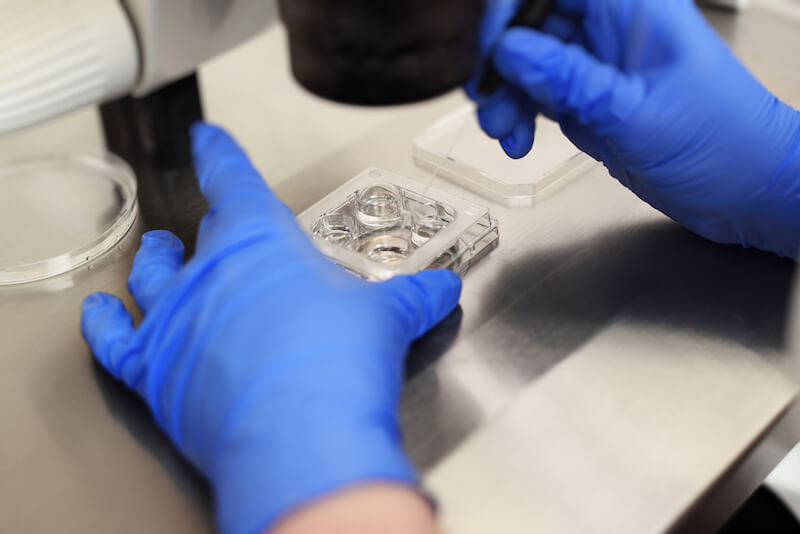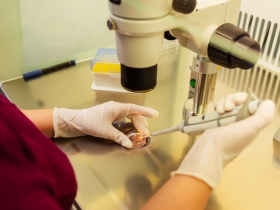Elective Single-Embryo Transfer in IVF Treatment
The embryo transfer is an integral part of the in vitro fertilization process. Typically, especially in the past multiple embryos were implanted in order to increase the chances of successful pregnancy ending with a healthy birth. However, multiple embryo transfer (MET) used to result in multiple pregnancies, which can be dangerous for the mother and the babies. Births of multiple pregnancies are more often premature, with low birth weight (LBW), and sometimes severe health hazards.
Elective Single-Embryo Transfer (eSET) enhances the success rate of in vitro fertilization (IVF) while reducing the risk of multiple pregnancies. It consists of transferring one carefully selected embryo into the uterus.
Why Choose eSET
The main goal is to achieve a healthy pregnancy that ends with a live birth while minimizing the potential risks associated with multiple pregnancies, such as preterm birth, low birth weight, and complications for both the mother and the babies. As some researchers indicate, pregnancies conceived by eSET IVF have a decreased risk of LBW and prematurity compared with those with double embryo transfer (DET) [1].
The Process of eSET
The process of IVF begins with ovarian stimulation, where the woman desiring to get pregnant undergoes hormone therapy to stimulate and increase the production of multiple eggs. These eggs are then collected and fertilized in a laboratory setting. After fertilization, the resulting embryos are grown again in the lab and monitored to assess their quality and development potential.
The selection of the embryos is a crucial step in eSET. Embryos are evaluated according to various criteria, such as their morphology, genetic characteristics, and developmental stage. The most viable and healthy embryo is then selected for transfer into the uterus. Fertility specialists, who use their expertise and specialized techniques to choose the embryos, are responsible for performing this.
Once selected, the best embryo is transferred into the woman's uterus using a thin catheter. The procedure is typically performed with the guidance of ultrasound to help with the accurate placement. After the transfer, it is common for the patient to be prescribed medications. These support the successful implantation and development of the embryo.

Pros and Cons of eSET
In comparison to the MET, eSET offers several advantages. Firstly, it reduces the risk of multiple pregnancies, which carry higher chances of complications such as gestational diabetes, preeclampsia, and other medical issues for both the mother and the babies.
Furthermore, eSET helps to minimize the chances of having a high number of multiple pregnancies (triplets or more). By transferring only one embryo, the likelihood of having a singleton pregnancy increases, improving the chances of a healthy outcome for both mother and baby.
eSET also lowers the overall the in vitro cost by avoiding the need for multiple IVF cycles. This reduces the financial burden on couples undergoing this treatment. Additionally, by decreasing the risks of multiple pregnancies, eSET can reduce healthcare costs related to neonatal care and long-term medical interventions.
The success of eSET depends on various factors, including the woman's age, the quality of the embryos, and the expertise of the fertility clinic. In some cases, where the chances of success are low or specific medical conditions exist, the transfer of multiple embryos may still be recommended.
In conclusion, elective Single-Embryo Transfer (eSET) helps increase the chances of a healthy pregnancy and live birth while minimizing the risks associated with multiple pregnancies. eSET advantages are a lowered risk of complications and healthcare costs. It also offers better control over the successfully implanted embryos. However, the positive outcome of eSET is related to several factors, and the decision to use eSET should be made in consultation with fertility specialists according to individual circumstances and medical considerations.
Sources:
- Grady, R., Alavi, N., Vale, R., Khandwala, M., & McDonald, S. D. (2012). Elective single embryo transfer and perinatal outcomes: a systematic review and meta-analysis. Fertility and Sterility, 97(2), 324-331.e8. https://doi.org/10.1016/j.fertnstert.2011.11.033
- Why Would I Choose to Have Elective Single-embryo Transfer (eSET)? (n.d.). https://www.reproductivefacts.org/news-and-publications/patient-fact-she...





